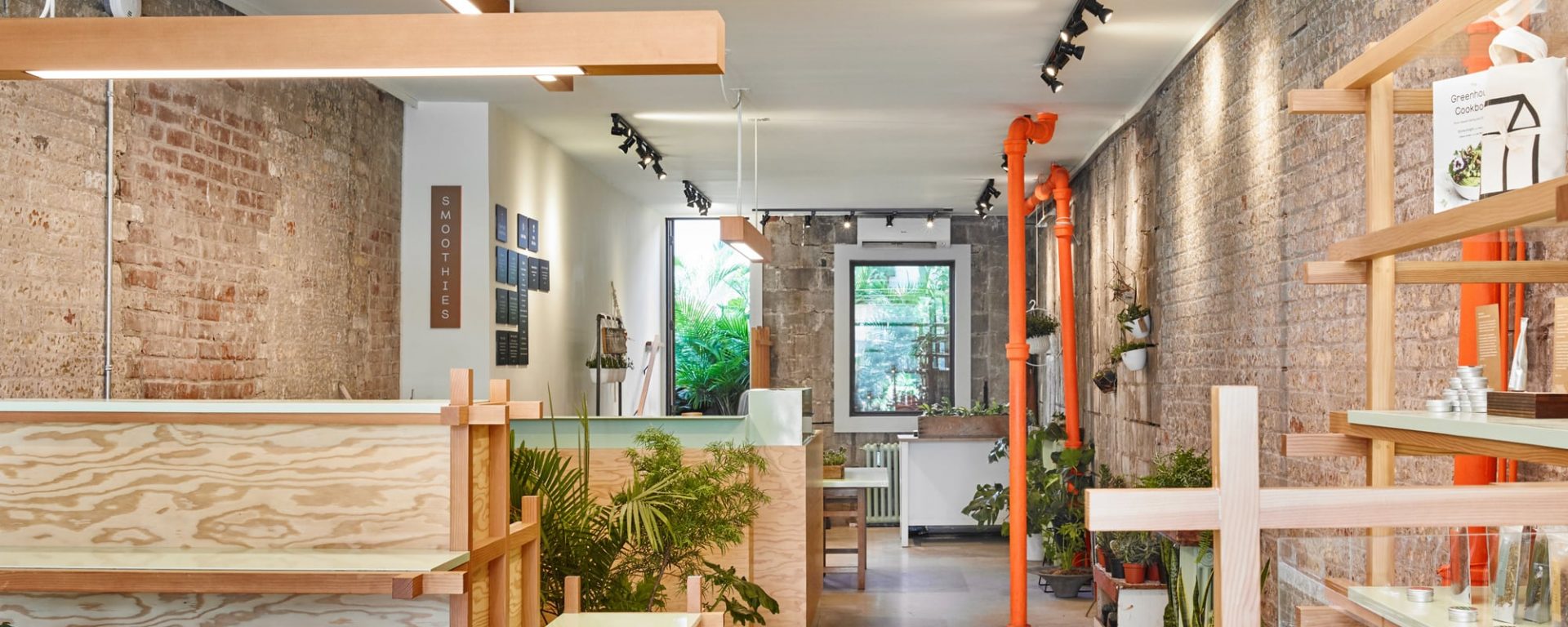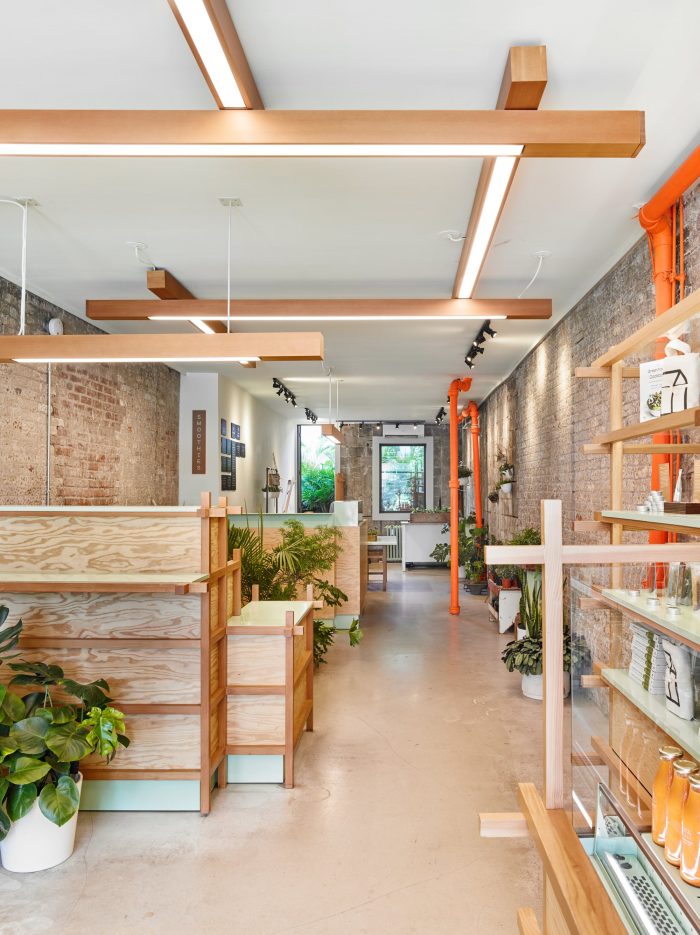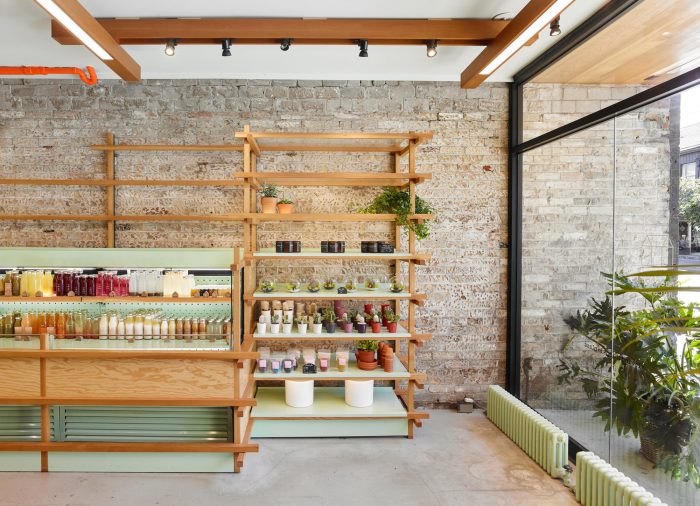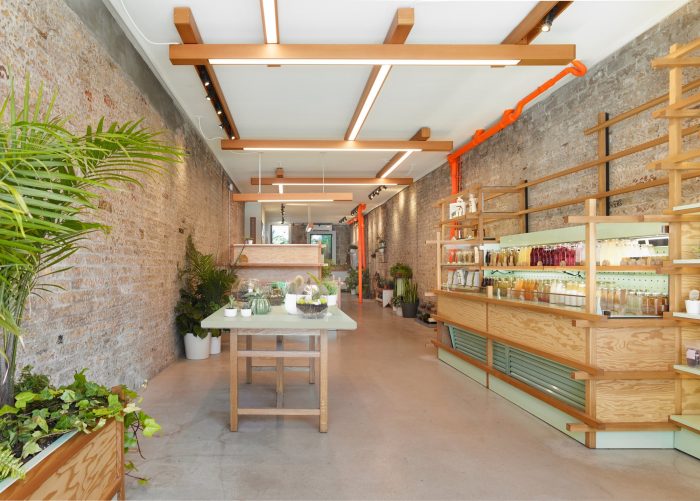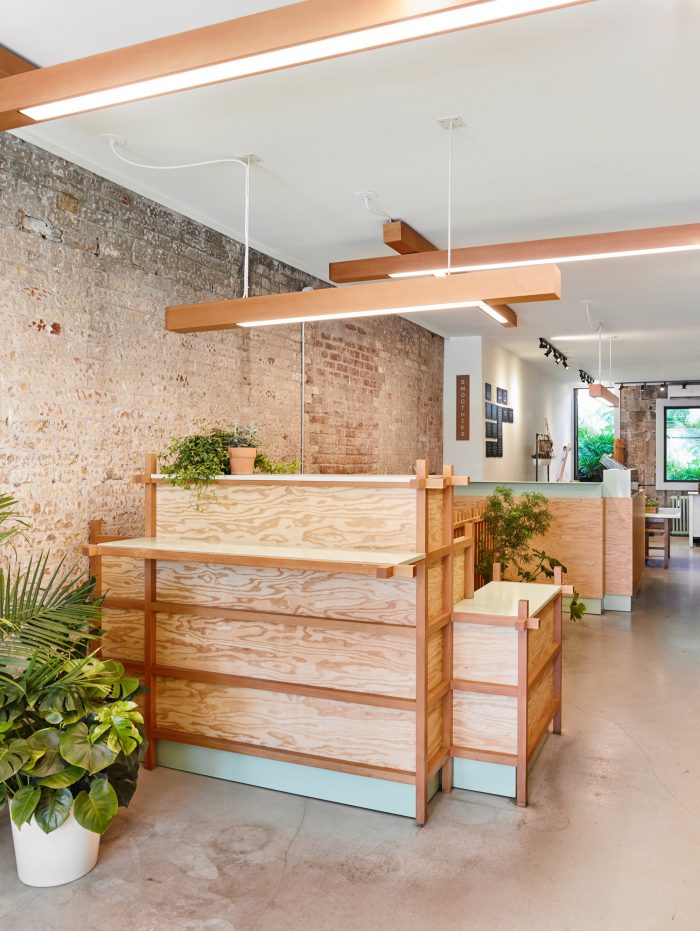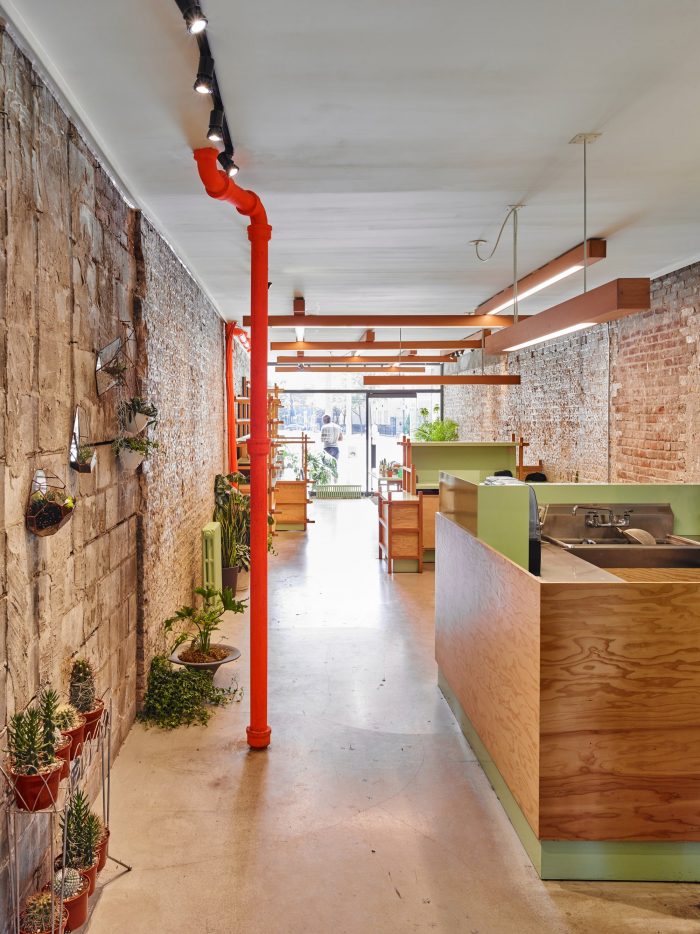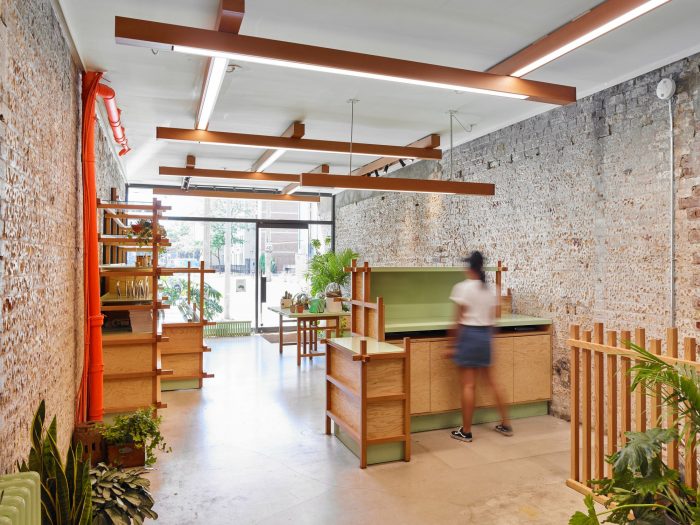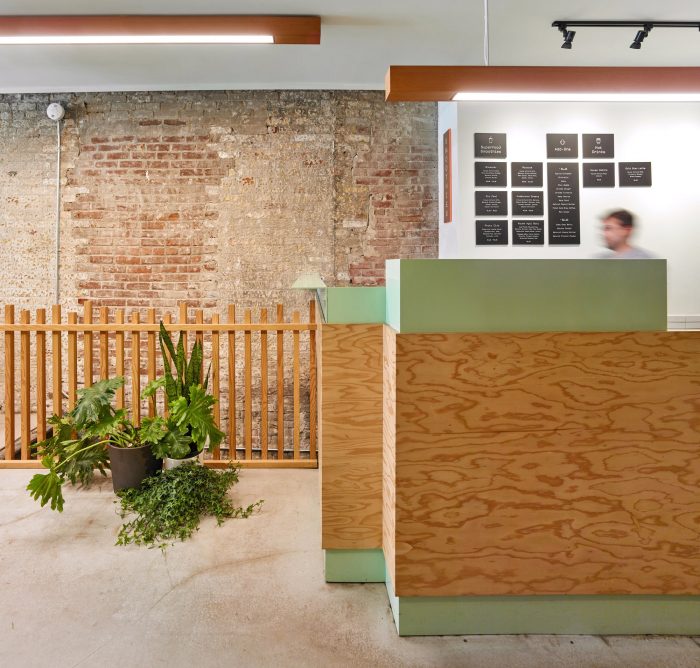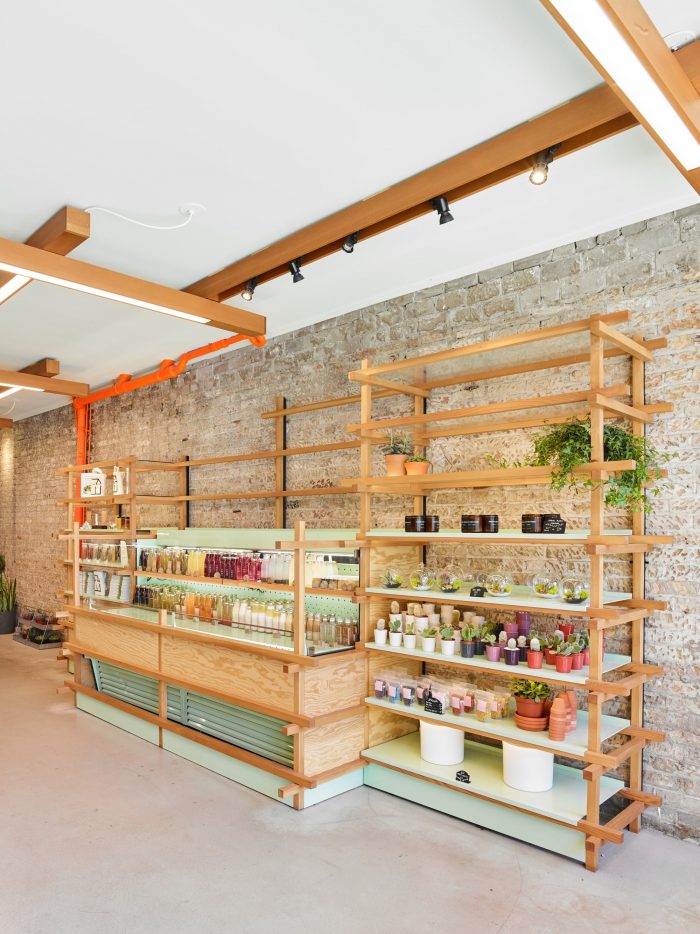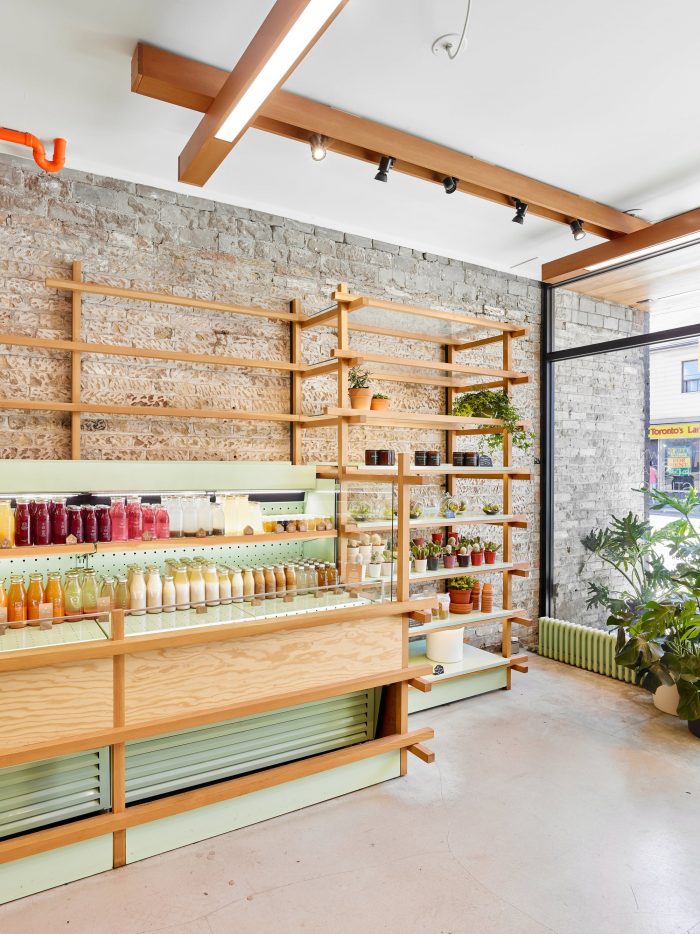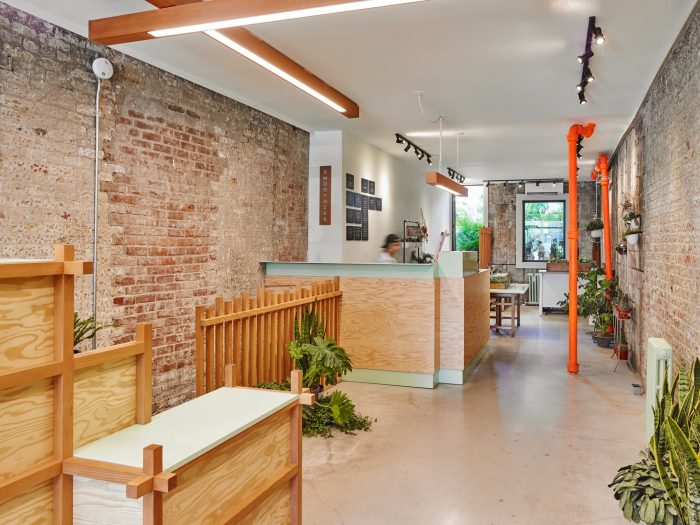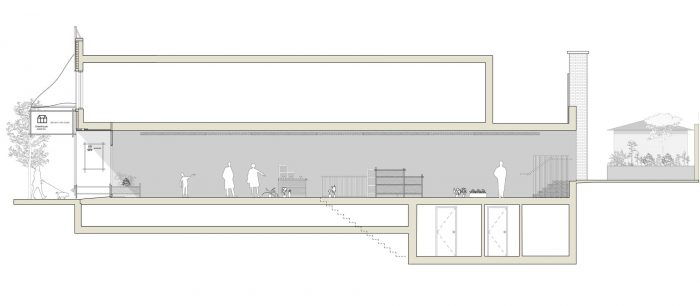该设计剥离了现有的零售空间,并暴露出有100年历史的砖石墙和管道系统。范围包括对现有空间进行改造,作为植物商店和冷压果汁店的合用场所。该设计包括一些木工装置、内部装修、照明、新店面建设和景观设计。范围包括两个客户的品牌和身份。
The design stripped down the existing retail space and exposed 100-year-old masonry walls and plumbing. Scope included the renovation of the existing space for use as co-location of a plant shop and cold-pressed juice store. The design included several millwork fixtures, interior finishes, lighting, new storefront construction, and landscaping. Scope included branding and identity for both clients.
多伦多的长、窄、暗的零售空间类型被重新想象成爱丽丝掉进兔子洞(来自刘易斯-卡罗尔的《爱丽丝梦游仙境》)。商店的重量被皇后街的正面和后花园的巷道正面所平衡。对街景和顾客体验的典型理解被颠覆了。多伦多正经历着对其巷道网络关注的转变。这个项目使巷道正面所扮演的角色更加鲜明。通过在这个建筑的 “后方 “创造一个目的地,用户被吸引到不止一个方向的空间里。
Toronto’s typology of long, narrow, and dark retail spaces is re-imagined as Alice’s fall down the rabbit hole (from Alice in Wonderland by Lewis Carroll). The weight of the store is balanced by the Queen Street frontage and laneway frontage at the rear garden. The typical understanding of the streetscape and the customer experience was subverted. Toronto is undergoing a shift in attention to its laneway network. This project sharpens the role that the laneway frontage plays. By creating a destination at the ‘rear’ of this building, users are drawn through space in more than one direction.
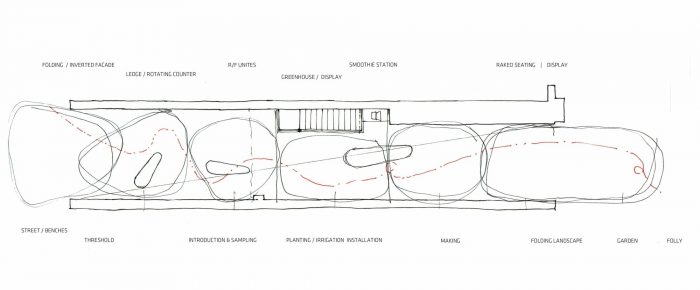
一个项目对其独特的位置、对邻近的用途以及对社区建设的贡献。沿着西皇后区的维多利亚时代的砖块建筑外墙是一种模式化的重复。这个店面打破了这种重复,在入口的门槛上有一个专门用于行人避难的空间。这块飞地使行人能够从人行道的步伐中逃脱出来,停顿片刻。嵌入的店面为行人提供了一个阴凉的长凳和天气保护,也为狗提供了一个放松的地方。一个类似的避难所是由一个后花园创造的,它带来了绿色的景观、活动和一个沿后巷的新正面。
The contribution a project makes to its unique location, to neighboring uses, and to community building. The Victorian-era brick building facades along West Queen West are a patterned repetition. This storefront works to break that repetition with a space dedicated to the pedestrian refuge as part of the entry threshold. This enclave allows pedestrians to escape from the pace of the sidewalk and pause for a moment. The inset storefront provides a shaded bench and weather protection for pedestrians and a place for dogs to relax. A similar refuge is created with a rear garden bringing a green landscape, activity, and a new frontage along the rear laneway.
该项目对可持续环境的贡献包括项目的可持续设计优点。商店的入口被嵌入,在夏天可以被动地遮阳,在冬天可以提供一个避风雪的地方。商店前部和后部的大门允许交叉通风,种植的后花园可以减少城市热岛效应。它使空间的一部分零售用途变得生动,并将其引向室外。前立面的设计是为了支持一个覆盖着葡萄的花格,为建筑遮阳,并绿化街景。所有的木制品都是用当地的花旗松实木建造的,并进行了最少的处理。
The contribution the project makes to a sustainable environment including the Sustainable Design Merits of the project. The store entry is inset to passively shade during the summer and to provide a refuge from snow and wind in the winter. The large doors in the front and rear of the store allow for cross-ventilation, and the planted a rear garden works to reduce the urban heat island effect. It animates and draws a portion of the retail use of the space to the outdoors. The front elevation was designed to support a vine-covered lattice that would shade the building, and green the streetscape. All millwork is constructed using solid locally sourced Douglas fir with minimal treatment.
在一个有两个客户的项目中,设计在每一个设计决定中都考虑到了以食品为基础和以植物为基础的企业的需求。这两个客户的主要需求是解构顾客和员工之间的分工,并将商店的用途融入社区。这一点是通过在建筑的前部和后部创造一个户外公共空间来实现的。在每一个元素中,自然的、未完成的和本地采购的材料反映了两个客户的可持续发展宗旨。
On a project with two clients, design addressed the needs of both a food-based and plant-based business in every design decision. Principal to both was the need to deconstruct the division between customer and staff and to weave the uses of the shop into the community. This was achieved by creating an outdoor public space at both the front and rear of the building. In every element, natural, unfinished, and locally sourced materials reflected the sustainability tenets of both clients’ ethos.
在这个项目中,零售设计被转向了侧面。该项目的遗产是沿着建筑的前后立面重新定义的街面。建筑物的立面被视为一个地面平面,其中街道设施,如长椅和标准,被理解为矩阵的一部分,包括安装在建筑物立面上的人工制品,如标牌和燃气表。人们对零售空间的使用是作为通向现有后方巷道的第二个临街面的通道–对于一个在许多步行街区达到过度密集化的城市来说,这是一个新的目的地。
Retail design is turned sideways in this project. The project’s legacy is a redefined street front along both front and rear elevations of the building. The façade of the building was treated as a ground plane where street furniture, such as benches and standards, are understood as part of a matrix that includes artifacts mounted to the building façade, such as signage and gas meters. One’s use of the retail space is as a passage to a second street frontage at the existing rear laneway– a new destination for a city reaching over densification in many pedestrian neighbourhoods.
Architects: Kilogram Studio
Area : 93 m²
Year : 2016
Client : Green House Juice Co.
Millwork : MCM Inc
Design Team : James Swain, Kfir Gluzberg
City : Toronto
Country : Canada

